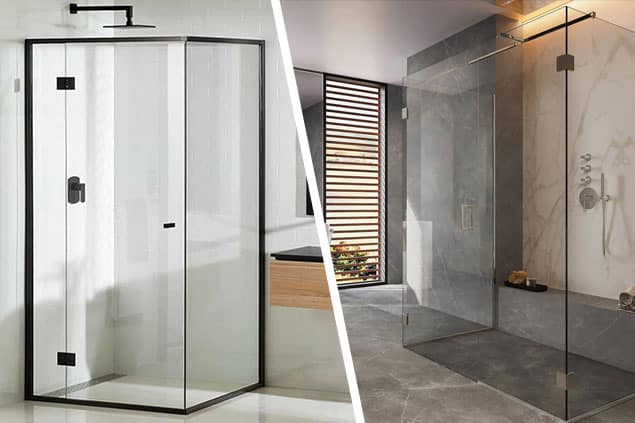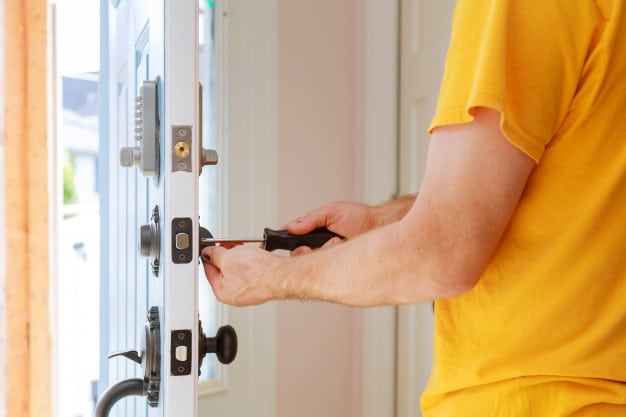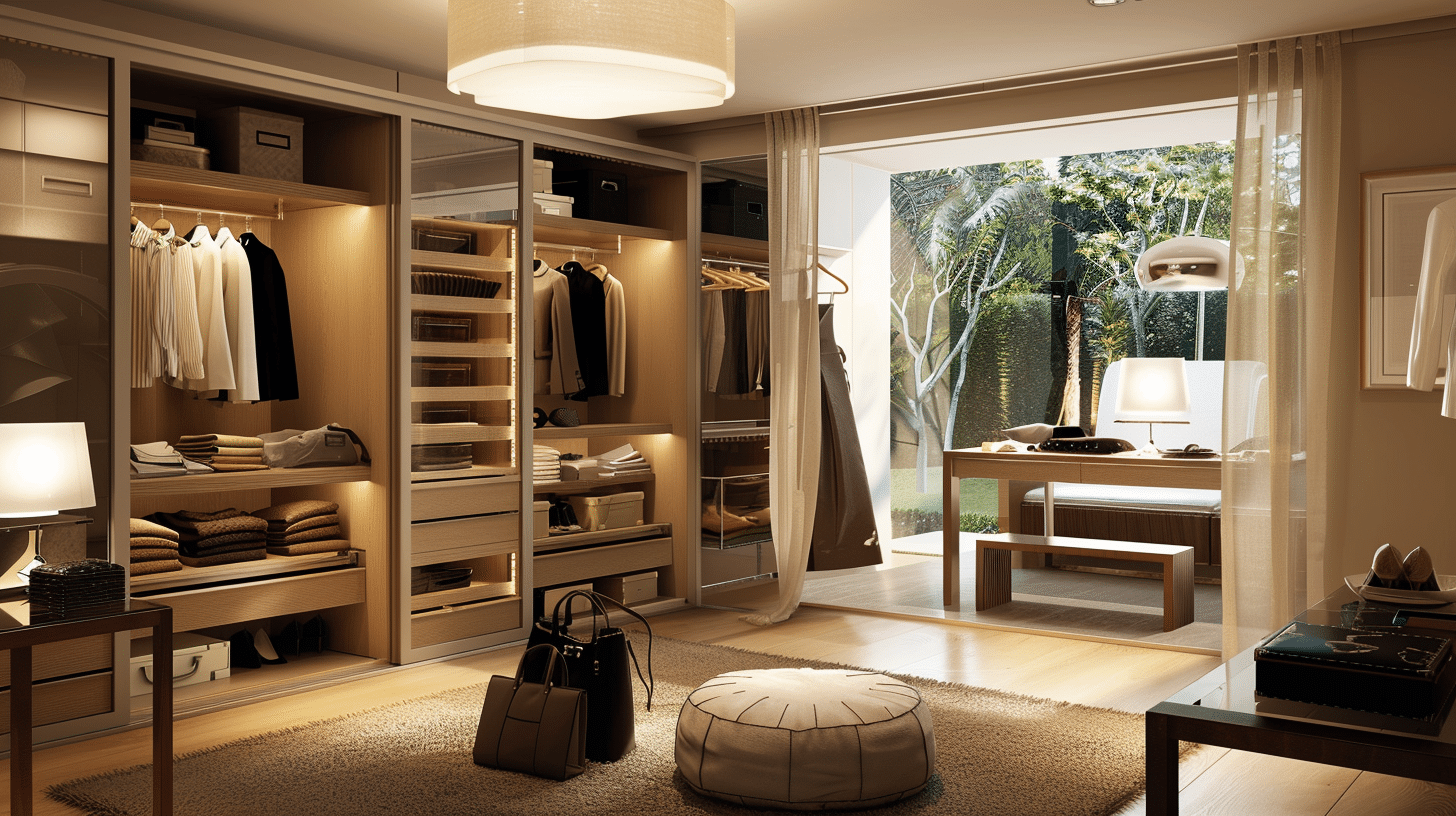Shower Screens: Frameless, Semi-Frameless, or Framed?
When considering a new shower screen, the choice between frameless, semi-frameless, and framed designs can feel important. Each type offers unique attributes in appearance, durability, and practicality, influencing not only the bathroom’s aesthetic but also its functionality and maintenance needs.
This article provides a thorough analysis of the advantages and considerations for each type, ensuring you can make a well-informed choice tailored to your specific bathroom requirements and preferences.
Understanding the Core Differences in Shower Screens
Shower screens, though simple in purpose, come in distinct styles that impact the overall look and feel of your bathroom.
Frameless, semi-frameless, and framed shower screens differ in their design structure and level of enclosure, resulting in varied effects on space, durability, and ease of cleaning. Here, we take a comprehensive look at what sets each of these designs apart and help clarify what makes them unique.
Frameless Shower Screens
Defining Frameless Shower Screens
Frameless shower screens are characterized by their minimalist design. With panels of tempered glass joined with discreet hardware rather than bulky frames, frameless screens provide a seamless, modern appearance. They are a popular choice among those seeking a clean, open feel in their bathrooms, as the absence of visible frames contributes to an uncluttered look.
Advantages of Frameless Shower Screens
One of the main advantages of frameless shower screens is their aesthetic appeal. Frameless enclosures are very popular among homeowners who desire a luxurious, open feel that maximizes space.
Because they lack the traditional metal frame, they allow for greater transparency and can help even small bathrooms feel larger and more open. This design also highlights premium tilework or other interior details.
Maintenance and Cleaning
Frameless shower screens are often easier to clean than framed or semi-frameless options, as they have fewer metal elements where soap scum and mildew can accumulate.
The smooth glass surface can be wiped down quickly, making frameless screens a convenient option for those who prioritize low-maintenance solutions. However, frameless screens do require precise installation due to their reliance on hardware and seals to remain watertight.
Durability and Cost Considerations
Frameless screens use thick tempered glass to ensure stability without a metal frame, making them robust and long-lasting.
However, the use of high-quality glass and specialized hardware makes them more expensive. This type of screen requires professional installation to ensure its safety and durability over time, particularly as improper installation can lead to leaks.
Semi-Frameless Shower Screens
Defining Semi-Frameless Shower Screens
Semi-frameless shower screens bridge the gap between frameless and fully framed designs. They typically feature metal framing around certain edges while leaving other edges frameless. For instance, the screen door may be framed at the top and bottom but left frameless on the sides, achieving a blend of minimalist design with added structural support.
Benefits of Semi-Frameless Screens
Semi-frameless shower screens offer a balance between the aesthetic appeal of frameless screens and the robustness of framed designs.
They provide a sleek look without completely sacrificing the framing, which can add stability and reduce costs. This hybrid option can be ideal for those who want an open look but with more structural support and a slightly lower price point than fully frameless screens.
Maintenance and Cleaning Requirements
With a partial frame, semi-frameless screens have fewer places for dirt to collect compared to fully framed screens, though they are not as low-maintenance as frameless designs.
The fewer metal components mean less chance of corrosion or mold buildup, yet some upkeep of the metal frame is still required. Regular cleaning is essential to prevent residue from accumulating in the framed portions.
Durability and Cost
Semi-frameless screens use slightly thinner glass than frameless screens, as the partial framing provides additional structural integrity.
This can lower costs while still delivering durability and an attractive appearance. Semi-frameless options are generally more budget-friendly than frameless designs but may require professional installation to ensure proper alignment and seal.
Framed Shower Screens
Defining Framed Shower Screens
Framed shower screens use a metal frame around all edges of the glass panels. These frames provide full support for the glass, often allowing for thinner glass panels to be used without compromising stability. Framed screens can be customized in terms of color and material, offering versatile design options for different bathroom aesthetics.
Advantages of Framed Screens
Framed shower screens are known for their durability and stability. The full frame around each glass panel makes these screens highly secure and provides a reliable barrier to prevent leaks.
This type of screen is often favored by families or households looking for a robust, long-lasting solution that can endure daily use without issues. Framed screens can also be more economical due to the reduced thickness of glass required.
Maintenance Needs
The main drawback of framed shower screens is their increased maintenance. The frame, especially if it includes multiple joints, is prone to collecting dirt, soap scum, and mildew.
Regular cleaning is necessary to maintain a fresh appearance and prevent grime from accumulating within the metal frame. Framed screens may also require more maintenance over time to keep the metal components in good condition, particularly in high-humidity environments.
Durability and Cost
Framed shower screens offer excellent durability due to their supportive frame, making them a cost-effective solution that can withstand frequent use.
They are generally the least expensive of the three options, as they require thinner glass. This makes them an attractive choice for budget-conscious consumers looking for a dependable shower screen that combines affordability with durability.
Choosing the Right Shower Screen for Your Bathroom
Selecting the best shower screen for your bathroom depends on several factors, including your design preferences, budget, and lifestyle needs.
If your priority is an open, modern look, frameless shower screens may be the best fit, especially for showcasing intricate tilework or maximizing perceived space. For those seeking a balance of style and support, semi-frameless screens provide a sleek aesthetic with extra stability.
Framed screens are ideal if durability and cost-effectiveness are the primary concerns, as they offer strong structural support at a lower price.
Additional Considerations for Each Shower Screen Type
Installation Requirements
Installation is a critical factor in shower screen choice. Frameless screens need precise installation and expert handling to ensure stability and prevent leaks.
Semi-frameless screens, while easier to install than frameless, still require careful alignment to maintain their visual appeal and functionality. Framed screens, due to their supportive structure, are generally the easiest to install and often require the least specialized labor.
Customization Options
Customization is possible with all three screen types, though options vary. Frameless and semi-frameless screens tend to offer more flexibility in glass texture and style.
Framed screens can also be customized with different frame colors and finishes, allowing you to match other bathroom fixtures or establish a specific design theme.
Long-Term Maintenance
Each shower screen type has unique maintenance demands. Frameless screens, while easier to clean, can require more frequent sealing checks.
Semi-frameless screens need some attention to the metal frame but are still simpler to maintain than framed options. Framed screens, while durable, need regular frame cleaning to avoid grime buildup.
Final Thoughts: Finding Your Ideal Shower Screen Solution
Choosing between frameless, semi-frameless, and framed shower screens ultimately comes down to your bathroom’s design goals, budget, and usage habits.
Frameless screens provide a sleek and open look that enhances the sense of space, making them ideal for contemporary bathrooms. Semi-frameless screens offer a compromise of style and structure, catering to those who seek an elegant yet stable solution.
Framed screens remain the best choice for those who prioritize durability and cost-efficiency, especially in high-use settings. Understanding the nuances of each type allows you to select a shower screen that complements both your bathroom’s aesthetic and your day-to-day needs.







